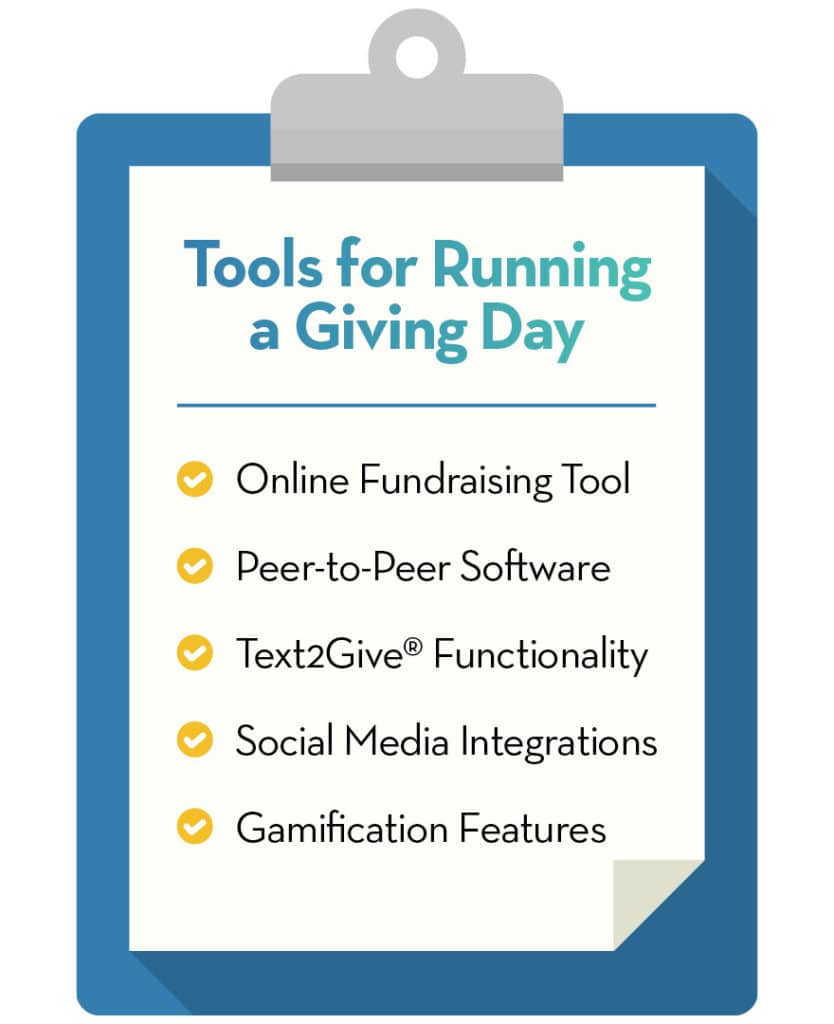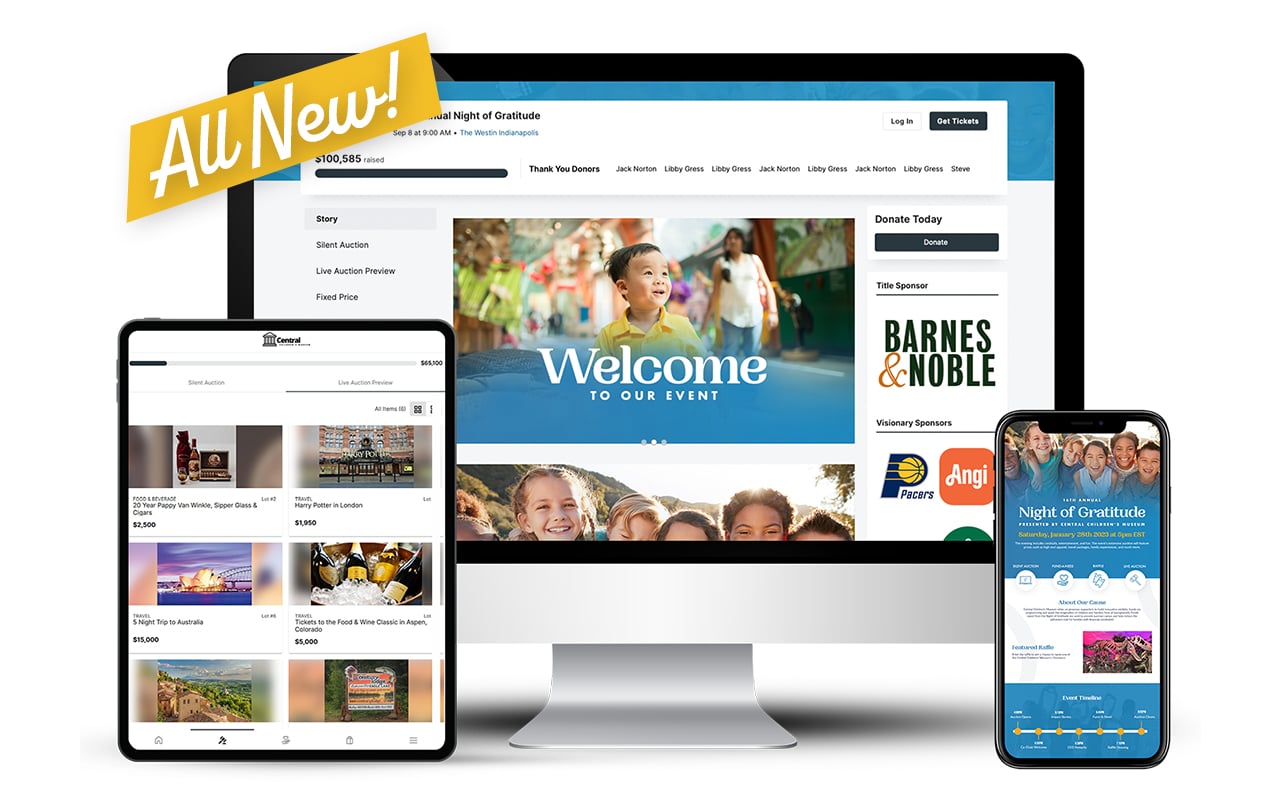Giving Days: The Guide to Planning Your Next Campaign
If your nonprofit is like most modern charitable organizations, you’ve probably started thinking about taking advantage of a dedicated Giving Day in the upcoming year. Giving Days are a rising way to engage new donors, give your charity a jolt of excitement, and increase donations.
Giving Days allow nonprofits to reach brand new donors (and keep them engaged) through means like social and Peer-to-Peer Fundraising, which are becoming steadfast methods that nonprofits rely on to attract new supporters.
This nonprofit guide will explore everything you need to know about planning and executing a successful giving day. We’ll answer some of your top questions, including:
1. How do giving days work for nonprofits?
While Giving Days have always been an important part of nonprofit fundraising strategy, they’ve become especially popular in recent years thanks to social media and social networks. Giving Days are dedicated days that bring together fundraising, supporter engagement, social networks, and awareness to create a highly targeted, multi-channel campaign.
One of the most well-known Giving Days is #GivingTuesday, which happens right after Thanksgiving and engages people around the world to give back to charity.
The formula for Giving Days’ success is their time-sensitive nature. Donors have one day – just 24 hours of giving – to support your cause and reach goals. This time-boxed theme creates urgency, excitement, and can provide a jolt of adrenaline to any campaign.
Many charities use Giving Days as a chance to showcase personal donor testimonials about what connects people to a cause or to share stories about the impact that has been made, thanks to the generous support and contributions from donors.
These campaigns rely on donor networks and social sharing to spread the word and motivate individuals to get involved with a cause through the use of hashtags, testimonials, microsites, and more.
Nonprofits can even run contests, giveaways, and other two-way engagement campaigns to draw in support and create competitive giving opportunities!
Giving Days are also a great way to raise awareness and attract new supporters to a cause. With the right planning, marketing, and social campaigns, Giving Days can catch on quickly and even go viral.
2. How do you plan a giving day?
In order for a Giving Day to be truly successful, supporters and donors need to know that it is happening. This requires serious planning and a clearly defined fundraising strategy.
Here is your comprehensive checklist to planning and executing a successful Giving Day campaign:
1. Pick a date.
It’s important to choose a Giving Day that holds special meaning or value to your cause. Many philanthropic causes have dedicated awareness months or days (such as Breast Cancer Awareness Month or World Mental Health Day).
If there isn’t a day on the calendar that fits with your mission – pick one! Anniversaries, special dates for your cause, historical days, you name it. Do quick online research to see if any other local charities or groups are also hosting a Giving Day, or if there is a larger awareness movement you can join.
2. Plan the campaign.
How are you going to connect with your supporters? How will you drive new donations? These are important questions to ask as they make sure you have tactics in place to both attract and capture your Giving Day donations.
If you’re going to run a Peer-to-Peer campaign as part of your Giving Day, you have to create the right content and information to ensure things run smoothly:
- Create a campaign-specific hashtag
- Build marketing materials to showcase the campaign (like social banners, graphics, and more)
- Plot out your day-of social media plan
- Set up your online donation platform to both reflect your Giving Day campaign
- Harness your Ambassadors and let supporters create their own Peer-to-Peer Fundraising pages
3. Spread the word.
Because Giving Days are focused 24-hour periods of fundraising, having a good marketing and communication strategy in place is key. You want to be able to market your event every second of the day. Here are a few things to think through as you begin planning:
- Offer and market comprehensive registration tools.
- Create intuitive email marketing engagement.
- Connect your event to your campaign.
- Market diverse giving channels and options.
- Use integrated software to manage your event.
Once your plan is in place, contact your most loyal supporters to have them help spread the word or set up Peer-to-Peer donation pages. Make sure that all critical information is clearly outlined on your website and online donation page. Set up any online tools you’ll use on the day and test them out to make sure everything is working. Test them through the eyes of your donors and supporters to make sure the giving experience is easy and intuitive.
Finally, work with local media outlets to schedule press releases and advertising and make sure your Ambassadors and influencers have everything they need to help spread the word and promote the campaign to their networks!
4. Plan an event.
Nonprofits can choose to host fundraising events to coincide with Giving Days as a way to thank donors and create even more excitement and momentum.
- On the Ground Events: If you’re hosting a large event, like a 5k run/walk, spread the word early and include the event in all of your marketing materials.
- VIP Affairs: If you’re hosting a smaller VIP event, like a gala or auction, personally invite your top supporters and brand the event to match your Giving Day materials.
5. Over-communicate.
On the actual Giving Day, kick things off with a big social media push across all channels. Don’t be shy about over-communicating! Include your Giving Day hashtag in all posts, and ask your followers to share with their networks.
Additionally, it’s a good idea to send out an email to let your supporters know the Giving Day has officially started.
Keep people updated throughout the day by:
- Posting status reports, personal testimonials, and other donor-created content.
- Sharing posts from donors that offer emotional messages or personal stories about why people are connected to your organization.
- Leveraging the social influence of your Ambassadors by making sure they’re geared up to tweet, post, and broadcast throughout the campaign!
6. Follow-up.
After a Giving Day, follow-up with donors to thank them for their support and generosity, and make sure you let people know how much money you were able to raise! Let your donors know what you plan on doing with their donations and how you will use the proceeds to drive change.
You can also share engagement numbers, such as how many people donated or how many mentions a hashtag had on social media.
In a recent study we conducted on social fundraising, we found:
- Many Social Donors aren’t deeply committed to a nonprofit. 51% percent of Social Donors are only somewhat familiar or unfamiliar with an organization prior to donating, with 38% of Social Donors giving to a new nonprofit for the first time.
- Ease, mission, and impact are top motivators. The number one reason why Social Donors give is because it is easy to do. While approximately eight out of 10 donors found their last social donation “very easy,” there are still nearly 20% who did not.
- There’s great opportunity for increasing Social Donor retention and conversion. A little more than a quarter (28%) of Social Donors say they will become annual or monthly donors in the future. About half (54%) anticipate repeating their giving behavior in the next 12 months.
Since many of these individuals are likely to be new supporters, it’s important to make sure that they’re thanked properly and are reminded of the difference they’re making so they continue to support your cause! Remember – building a strong relationship from the get-go is what it’s all about.
3. What are essential giving day software tools?
Giving Days are true digital campaigns, which means they require fundraising software to help reach the most donors and maximize gifts. Here is a quick checklist of the essential software functionality your nonprofit needs for your next Giving Day:
- Online donation processing. Almost all donations made during a Giving Day are made online. Look for a donation platform that enables fully mobile functionality so people can donate wherever, whenever. Personalize your giving page with Giving Day branding and messaging. Create a leaderboard that highlights the top or most recent donors.
- Peer-to-Peer fundraising. Your current donors are some of your most valuable voices, so it’s up to you to make it easy for them to spread the word about your organization with others. Choose a vendor that makes it simple to set up personal microsites with full social integration so your supporters can spend less time on setup and more time on engaging their networks.
- Text-to-Give functionality. Take your Giving Day to the next level with the innovation of Text2Give®. Nonprofits can create a Giving Day-specific shortcode that, when texted, allows donors to easily make a donation straight from their phone. You can also use texting functionality to send campaign updates throughout the day and thank donors for a donation they made online.
- Social media integration. Giving Days run on social media awareness, so it’s important to share this engagement with your supporters. Create a live social feed on your online giving page that collects all social posts that mention your charity, Giving Day, or hashtag. Aggregate these posts into a live social ‘wall’ to keep the conversation going between supporters.
- Gamification. Gamification tactics, like scoreboards, leaderboards, contests and premiums, can keep attendees engaged and involved during an event so they’re tuned in to the goal throughout your fundraiser. Having a scoreboard onsite that’s steadily counting towards your nonprofit goal creates excitement and urgency that will have guests galvanized to help meet or beat your goals.
All nonprofit fundraising software is not created equal. Giving Days require a level of flexibility and customization that not every solution can provide. With the OneCause Fundraising Platform, nonprofits can personalize every single aspect of the Giving Day donation process, from custom-branded giving pages to personalized and fully secure text-to-donate functionality.
Wrapping Up!
With the strategies outlined in this guide, we are sure your team can host the most successful Giving or Awareness Day ever. OneCause can help! The OneCause Fundraising Platform makes giving modern, flexible, and seamless to drive deeper engagement and grow your fundraising. Take a look at this versatile all-in-one fundraising software that meets the expectations of today’s donor.
- Giving & Awareness Days Made Easy: Take your fundraising to the next level with easy-to-follow steps to launch a creative online giving campaign.
- 5 Best Strategies to Boost Your Nonprofit’s Growth This Year: Explore tips to expand your nonprofit’s reach effectively.
- Raise More & Reach More: The Ultimate Guide to Giving & Awareness Days: Dive into this comprehensive resource to learn all about Giving & Awareness days from A to Z.






